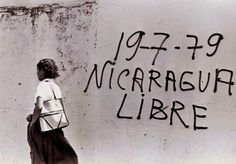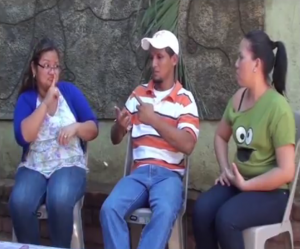Lingoblog continues to celebrate International Day of Sign Languages! Today, Linguistic Mythbusters explode myths about sign languages.
Most people have a pretty clear intuition about the most basic idea behind sign language: If you, for some reason, can’t communicate efficiently through ‘normal’ language, you can use a language that consists of hand movements instead of sounds. But apart from this, there are actually quite a few misconceptions about sign language that flourish among people with normal hearing.
One of the biggest misconceptions about sign language is that it is one single language that has been designed deliberately to be used by deaf people. In reality, there are hundreds of different sign languages, which have all naturally emerged from interaction between people who needed a non-verbal way to communicate. American Sign Language is completely different from Australian Sign Language, none of which are the same as British Sign Language. Sign languages emerge and evolve in specific social and cultural circumstances, just like spoken languages.

One of the most interesting examples of this is the story of Nicaraguan Sign Language, that emerged in the late 1970’s. Since there hadn’t been a unified community of people who were deaf or hard of hearing up until then, the country did not have a common sign language either. After a violent revolution in 1979, however, the new Nicaraguan government established a special school for deaf children. The purpose was to teach them how to read lips and imitate spoken Spanish, so they would be better equipped to participate in ‘real’ conversations.
The experiment failed in the eyes of the government since their spoken language skills did not improve. Nevertheless, something even more interesting occurred: The children gradually developed their own sign language to communicate with each other. As more children arrived at the school over the course of the following years, new students learned the language by speaking to the older students, and in 1997 the language was used by no less than 3000 people. Current data on the number of speakers of the language do not exist, but it is likely that the number is even higher today, as more generations have been born into and raised with the language.

Creating a new language from scratch is arguably quite the accomplishment for a group of school kids, so let’s give them a hand – and maybe use our hands to learn some sign language too!
Watch a short documentary in English:
Written by Gustav Johannesen on behalf of Linguistic Mythbusters. Find us on Facebook: https://www.facebook.com/linguisticmythbusters/.
This post was translated from Danish by Hannah Fedder Williams.







